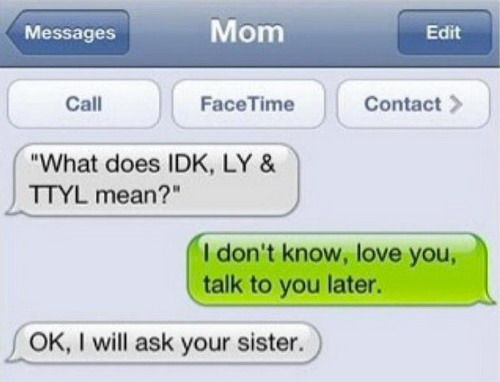SMS Marketing Best Practices 2013
Let’s face it. As a society, we have become immersed in the simplicities that technology has graced us with, and we’re completely okay with that. Who isn’t opposed to simple? Take communication for example. Nowadays, when you’re looking to quickly get in touch with someone, typically a text message, or SMS, is the method of choice. Not only is this a quick way of getting your message across, but it’s convenient for both the sender and the recipient. In the field of marketing, texting has become an essential part in promoting brand efforts. People are busy and always on-the-go. So, as a marketer, reaching out to those busy individuals in a quick, yet effective way, is ideal when looking to promote your brand. Take a look at these SMS Marketing Best Practices to help you kickstart your campaign.
Gain Permission
Before your SMS marketing campaign takes off, it is required by law that you gain the permission of your prospects via opt-in through SMS. The FCC, Federal Communications Commission, recently amended the TCPA Act of 1991, which takes into effect October 16, 2013, stating that consent is required before messages can be sent. Consent is defined as “written permission”, further explained as notification of intent to send commercial content in a conspicuous manner prior to subscription or through an online form submission process that is “E-Sign Act” compliant.
It should be noted that there is no need for written consent in cases where your SMS message is transactional or relation-based, such as informational alerts, reminders, or notifications.
Disclaimers
At the end of an SMS marketing message, there are a few things that are required to be there. “HELP” is listed in order to ease the experience the recipient has with the campaign. This will provide the prospect with further information about the campaign they’re subscribed to. “STOP” or “STOP ALL” is listed in order for the prospect to discharge out of the campaign so that they will no longer receive messages from the sender. For more information, check out SMS Marketing Compliances.
In relation to the amended TCPA Act of 1991, it should be known that if an organization is allocated a short code that is being shared with another organization, any opt-out by the recipient will result in an opt-out of all organizations with that same short code.
Provide Significant Value
The essential focus of your SMS campaign is to attract leads in order to convert them into customers, and life-long customers at that. The key to doing that is to create exceptional value to those individuals that they wouldn’t be able to take advantage of otherwise. Take a retail store for example. Let’s say you’re a big fan of a local department store. Periodically, stores will use promotional offers to attract customers in to buy. So, this week, the store’s promotion is 15 percent off of your purchase when you bring in the flyer that was sent through the mail. But oh, wait, in the midst of your rush this morning, you left that flyer at home. Do you drive back home to get it, or do you just make your purchase without it?
The value that can be offered to combat this would have been an SMS from the department store offering you that same discount, but instead of bringing the flyer, showing the text message at the counter. Our mobile devices have nearly become the center of our universe. The chances of forgetting your mobile device in comparison to the flyer are much lower.
Be Exclusive
Any customer can take advantage of promotional offers from an organization. To bring success to your campaign, try to offer those customers that are subscribed to your campaign deals that other customers wouldn’t normally be able to take advantage of. So, that 15 percent off coupon that the department store was offering could be doubled to 30 percent to add exclusive value.

Timing is Everything
Regardless of the organization you’re running, you’re going to need to take into consideration the schedules of your SMS recipients. Sending a text message to your customers at 2 AM probably isn’t the greatest idea. Daytime hours and weekends work best for most interactions. Also, if you’re sending texts out to the younger school-aged generation, think about the times in which those individuals would be in class. Even if they did get the opportunity to sneak and read it, chances are your message’s information may not be retained throughout the rest of the school day.

Frequency
You’re not going to want to overwhelm your customers by bombarding them with text messages. A general rule to follow in terms of how often to send SMS offers is at least once a month, no more than once a week. Consider it “The Rule of Ones”. If you disturb your customer with an abundance of messages, they’re more likely to opt-out of your campaign, losing you potential business.

Watch Your Language
Although “text speak” is becoming more socially accepted, there are still individuals out there who aren’t following the trend. Try to limit text speak as much as possible when sending out texts to your customers. A typical text message will allows for 160 characters, about 98 after including the required disclaimers, so sometimes shortening messages is required. Shortened forms such as “u”, “txt”, and “msg” are generally understood and are acceptable.
Also, if there is an opportunity where your customer is required to reply back to the message that was sent, make sure that the reply word given for them to use is one word. Using two or more words can create confusion with your customer or your SMS marketing database and may result in the customer not receiving value from the message.

Relevance
No one likes getting spam, and there’s no need for it. When your messages are delivered, make sure that the content within the message is relevant to what the customer subscribed to initially. So, if you subscribed to that department store’s SMS marketing campaign wanting exclusive offers and notifications about shoes, you wouldn’t want to be getting text messages informing you about the promotions on children’s clothing. If your customers find value from the messages they’re receiving, they’ll continue to subscribe.

Follow-Up
When a customer replies to a text sent via your SMS marketing campaign, be certain that a reply is sent back to them acknowledging that their reply was received. Don’t let your customers feel neglected.
SMS Marketing campaigns can benefit your organization exponentially. Providing ease and convenience for you customers during their busy schedule creates long-lasting relationships that will drive your organization to success now and in the future. These SMS Marketing Best Practices are simple, yet effective ways to keep communication strong, while ultimately, providing exceptional value to your customer.










Leave a Reply
Want to join the discussion?Feel free to contribute!